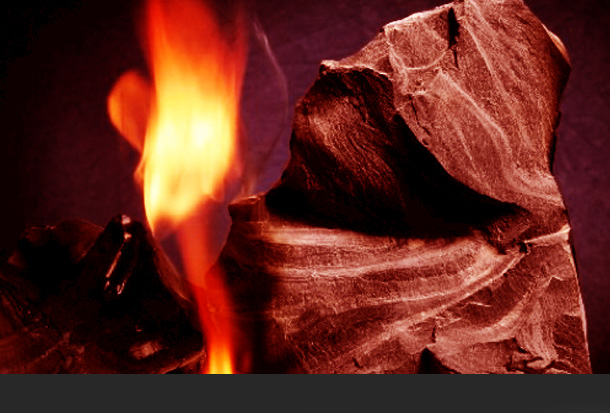21st Century Wire says…
The Environmental Protection Agency (EPA) masquerades as a ‘green’ arm of government, but the green they are really looking after is the color of corporate money…
One of the fundamental problems with centralized federal agencies like the EPA in the United States – is that they cannot rest when it comes to social control. They cannot stay idle. Why? Because in a full-blown fascist system, social control ultimately means economic control.
We reported earlier this week how the interests of large private energy corporations are steering teams of armed government ‘NATS’ thugs in California to crack down on independent homes generating their own solar power. They don’t want anyone off the grid, and will do whatever it takes to shut down anyone who is not feeding off the energy monopoly nipple.

Now we can see how the EPA, through its “Burn Wise” program, is targeting (and eventually harassing) any homes with wood burning stoves, or even BBQ’s – forcing them to “comply” (aka spend money) with new creative regulation. They claim it’s about cleaner air, but in reality they want everyone on the grid. Failure to comply means trouble.
Notice how this ‘environmental protection’ agency is obliged to turn a blind eye to the dangers and radiation leaks from the nuclear power industry, or how they ignore the dangers posed by toxic products from GMO and chemical giants like Monsanto Corp.
This is fascism in its purest form.
This is America…
Wood-burning stoves offer warmth and enhance off-grid living options during cold weather months, but the tried-and-true heating devices now are under attack by the Environmental Protection Agency.
The EPA has banned the production and sale of the types of stoves used by about 80 percent of those with such stoves. The regulations limit the amount of “airborne fine-particle matter” to 12 micrograms per cubic meter of air. The current EPA regulations allow for 15 micrograms in the same amount of air space.
Most of the wood stoves currently nestled inside cabins and homes from coast-to-coast don’t meet the new environmental standard. The EPA launched a “Burn Wise” website to help convince the public that the new regulations were needed.
Trading in an old stove for a newer stove isn’t allowed.
“Replacing an older stove with a cleaner-burning stove will not improve air quality if the older stove is reused somewhere else,” the website says. “For this reason, wood stove change out programs usually require older stoves to be destroyed and recycled as scrap metal, or rendered inoperable.”
In some areas of the country, local governments have gone further than the EPA and banned not just the sale of such stoves, but the usage of old stoves – and even the usage of fireplaces. That means that even if you still have a stove or a fireplace, you can’t burn it for fear of a fine. Puget Sound, Washington, is one such location.
Burn Wise is a partnership program associated with the EPA that is tasked with emphasizing the “importance of burning the right wood, the right way, in the right stove.” Information shared on the website operated by the federal government also states that both state and local agencies are pursuing ways to improve air quality that relate to wood-burning stoves.
The overall goal of the EPA Burn Wise program is to educate both local governmental agencies and citizens about the need for more “cleaner-burning” in the marketplace. Three of the most recent highlighted articles and webinars on the EPA Burn Wise website include details about a voluntary wood burning fireplace program, strategies for reducing residential wood some in state, tribal, and local communities, and a recording entitled, “Reducing Residential Wood Some: Is it Worth it?”
The EPA also has compiled a list of “approved” stoves.
According to a Washington Times review of the wood stove ban, the most dangerous aspect of the EPA proposed guidelines is the one-size-fits-all approach to the perceived problem. The same wood burning stove rules would apply to both heavily air-pollution laden major cities and far cleaner rural regions with extremely cooler temperatures. Families living in Alaska, or off the grid in wilderness area in the West, will most likely have extreme difficulty remaining in their cold, secluded homes if the EPA wood stove rules are approved.
The Times further said that wood burning stoves put less airborne fine-particle manner in the air than is present from secondhand some in a closed vehicle. When an individual smokes inside a car with the windows up, passengers are reportedly exposed to approximately 4,000 micrograms of soot per cubic meter.
Wrote the Times’ editorial board:
“Alaska’s 663,000 square miles is mostly forested, offering residents an abundant source of affordable firewood. When county officials floated a plan to regulate the burning of wood, residents were understandably inflamed. ‘Everybody wants clean air. We just have to make sure that we can also heat our homes,’ state Rep. Tammie Wilson told the Associated Press. Rather than fret over EPA’s computer-model-based warning about the dangers of inhaling soot from wood smoke, residents have more pressing concerns on their minds such as the immediate risk of freezing when the mercury plunges.”
Do you support the EPA’s wood stove ban?
READ MORE CLIMATE NEWS AT: 21st Century Wire Climate Change Files















